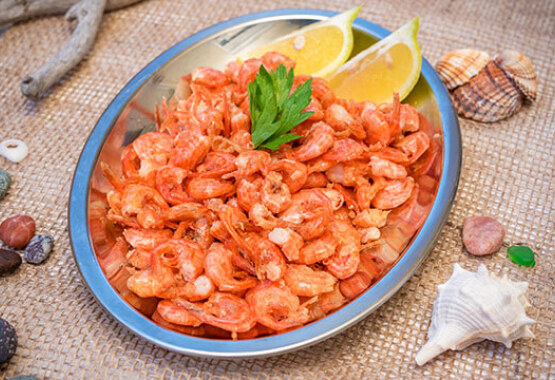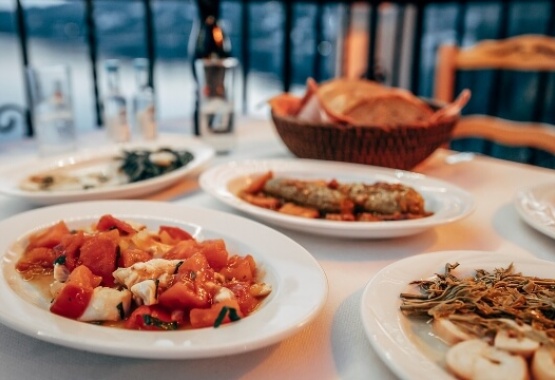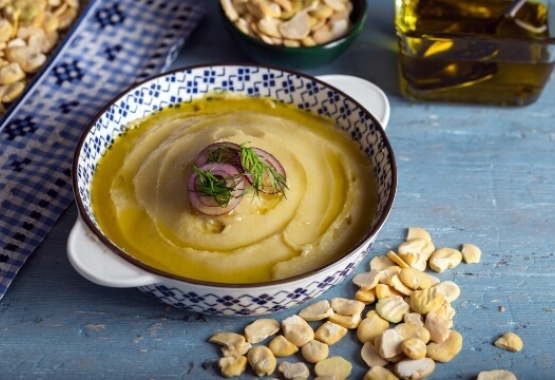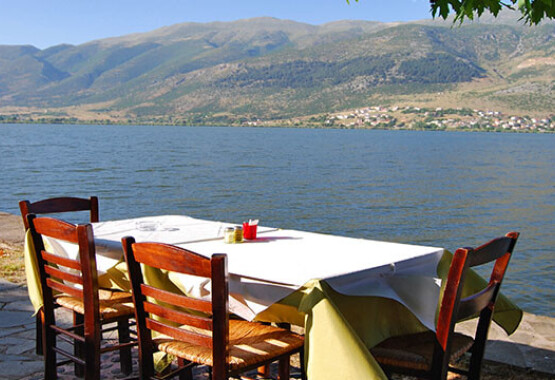
HYDRA
Among the most famous dishes of Hydra are the local pies, stuffed with mountain greens, snails, braised or stewed meat, cuttlefish and squid accompanied by pilaf, as well as red mullet savoro. For meat eaters, the kapama lamb is an ideal choice, while if you happen to visit during Christmas you can try the tasty quince and beef.
The culinary history of Hydra
The rise of shipping brought great commercial development to the island. In the 18th century, the merchant ships of Hydra carried grain, cereals, rice, oil, butter, carobs, acorns and raisins, and even caviar from Alexandria to Constantinople. The wealth of goods was more than evident in the affluent, urban houses of the island, and also had an important part to play in the island’s gastronomic development. At the same time, legumes, beans, lentils and chickpeas were preferred by the island’s housewives. The kitchens of the beautiful traditional houses, which remain an integral part of Hydra’s charm, were dominated by hot stoves that operated with coal and wood, but also a built-in bench along with an early form of cooker hood, called fouska.
Τhe island’s traditional dishes
The inhabitants of Hydra use only flour and water to make the famous gogles, the delicious, handmade pasta that looks like small clams and served with melted butter. They are still available at traditional restaurants of the island, as are fresh squid, octopus and red mullets, which are cooked, either fried or in a pot. After all, if there is one thing the island is famous for, it is for its fresh fish.
Hydra is also the place to try delicious traditional sweets, which are worth taking back home. Hydra macaroons are very popular, so visitors with a sweet tooth should not forget to buy kourabiedes, almond pears (achladakia), skaltsounia and sugar baklavas. The favourite dessert of the locals, however, are lalangites (pancakes), drizzled with honey or petimezi (grape molasses). They are part of a traditional lunch, but also a typical treat on holidays and special occasions.
During Easter, it is virtually impossible not to taste the local magiritsa and lamb on a spit which is the preferred dish, unlike other Aegean islands where on the Feast of the Resurrection the locals prefer the well-known patoudo, goat stuffed in the oven with rice and liver.
The Cuisine of Hydra
The culinary tradition of the beautiful island of Hydra in the Argosaronic archipelago is anchored to its long history. The dishes encountered on restaurant menus, both during the holiday season and on a daily basis, have their roots in the tradition and history of Hydra, with seafood at the forefront, next to several delicious meats.Among the most famous dishes of Hydra are the local pies, stuffed with mountain greens, snails, braised or stewed meat, cuttlefish and squid accompanied by pilaf, as well as red mullet savoro. For meat eaters, the kapama lamb is an ideal choice, while if you happen to visit during Christmas you can try the tasty quince and beef.
The culinary history of Hydra
The rise of shipping brought great commercial development to the island. In the 18th century, the merchant ships of Hydra carried grain, cereals, rice, oil, butter, carobs, acorns and raisins, and even caviar from Alexandria to Constantinople. The wealth of goods was more than evident in the affluent, urban houses of the island, and also had an important part to play in the island’s gastronomic development. At the same time, legumes, beans, lentils and chickpeas were preferred by the island’s housewives. The kitchens of the beautiful traditional houses, which remain an integral part of Hydra’s charm, were dominated by hot stoves that operated with coal and wood, but also a built-in bench along with an early form of cooker hood, called fouska.
Τhe island’s traditional dishes
The inhabitants of Hydra use only flour and water to make the famous gogles, the delicious, handmade pasta that looks like small clams and served with melted butter. They are still available at traditional restaurants of the island, as are fresh squid, octopus and red mullets, which are cooked, either fried or in a pot. After all, if there is one thing the island is famous for, it is for its fresh fish.
Hydra is also the place to try delicious traditional sweets, which are worth taking back home. Hydra macaroons are very popular, so visitors with a sweet tooth should not forget to buy kourabiedes, almond pears (achladakia), skaltsounia and sugar baklavas. The favourite dessert of the locals, however, are lalangites (pancakes), drizzled with honey or petimezi (grape molasses). They are part of a traditional lunch, but also a typical treat on holidays and special occasions.
During Easter, it is virtually impossible not to taste the local magiritsa and lamb on a spit which is the preferred dish, unlike other Aegean islands where on the Feast of the Resurrection the locals prefer the well-known patoudo, goat stuffed in the oven with rice and liver.




